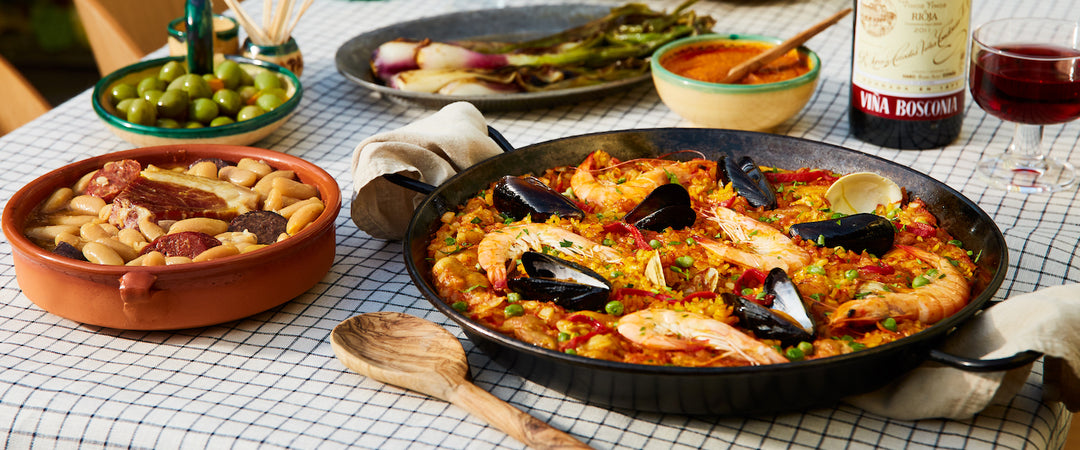December 2024 Mariner's Society
Last September in Spain, I was captivated by the making of Dorados and the beautiful expression of different wines that use oxygen to craft incredibly complex and sophisticated profiles (oh, and I couldn’t resist the unique bottle shape!) So this inspired me to explore the subject of oxidative wines in this month's Mariner's Club!
In winemaking, oxidation is an essential but sometimes controversial process. While it can spoil a wine, it can also be intentionally used to create distinctive styles. The terms “oxidized’ and “oxidative” are often misunderstood. “Oxidized” typically refers to a wine that has aged poorly, losing vibrancy and developing unappealing flavors, while “oxidative” describes wines with complex, nutty, and savory notes that are intentionally shaped by exposure to oxygen. With wines that embrace oxidative characteristics, like those featured in this month's Mariner's Club, understanding these terms allows us to appreciate the difference between flaw and style.
 
|
Bodega de Alberto DoradoRegular Price: $43.99
Club Price: $37.39
|
Bodegas de Alberto is currently the only traditional Rueda Dorado winemaker, under the exclusive method of oxidative aging in damajuanas (aka demi-johns) exposed to the sun and later aging in soleras, preserving the mother of more than 70 years. Traditional method that Gutiérrez family has maintained uninterrupted since the 40s and passed down from generation to generation.


This 100% Verdejo shines bright gold—dorado in Spanish — with antique highlights. Its aroma has delicate notes of toasted nuts, while the finish is long and expressive, offering flavors of vanilla, raisins, and a remarkably persistent finish. Perfect alongside long-aged cheeses, poultry stews, anchovies, cod, or foie gras.
 
|
La Cigarrera Amontillado VOSRegular Price: $113.00
Club Price: $96.05
|
La Cigarrera’s Amontillado Viejo is an amazing wine that comes from the Sacristia of the bodega. The Sacristia contains the family’s oldest wines that have been passed down through generations. This Amontillado was started as a special barrel for Ignacio’s Grandmother and has never been sold before.
La Cigarrera Amontillado VOS (Very Old Sherry) goes through a unique combination of both biological and oxidative aging, giving it a very distinctive character. The wine starts its life aging under a layer of flor (yeast) in a biologically protective environment, similar to a Fino or Manzanilla. This phase typically lasts several years and imparts the freshness, salinity, and subtle nutty notes associated with biologically aged sherries.
After the flor dies off, the wine transitions to oxidative aging, during which it is exposed to oxygen in partially filled oak barrels. This oxidative phase, which spans the majority of the wine’s extended aging period—over 20 years on average for a VOS designation—deepens its color and develops complex flavors of roasted nuts, dried fruits, and a hint of caramel.
The biological phase tempers the wine in the beginning, keeping it from oxygen adding a crisp, fresh edge. But as time passes and the flor fades, the wine begins its long dance with oxygen, transforming into something richer and more complex. These two aging processes create a beautiful balance—a wine that carries the bright sharpness of a young wine with the deep, layered richness that only comes with decades of aging.

 
|
Espodol Vi Ranci Sec
|
The tradition of Vi Ranci and Rancio sec has been passed down through the generations in both northern and southern Catalunya, right along the French-Spanish border. Vi Ranci and Solera Garnatxa d'Emporda, which continue the tradition of oxidative wines first made over two millennia ago during Greek and Roman settlement of the area.
While most of the Vi Ranci made in Spain today is fortified, Espodol Vi Ranci Sec is a bit of a rarity—it’s made without any fortification at all. It starts with old-vine Garnatxa blanca and Garnatxa rosat and the Solera Garnatxa d'Emporda starts as a Garnatxa Negre hand-harvested and co-fermented in concrete tanks. After fermentation, the wine enters a slow-aging process in a solera system that dates back to 1950. Over the years, a little bit of wine moves from one tank to the next, from large foudres down to 300-600L barrels, each step happening just once every 3-4 years. They only bottle a small amount once a year, pulling it from the solera little by little.
The result is a wine that’s tangy, lively, and full of character, with flavors that might remind you of flamed orange, jamón ibérico, hazelnuts, acorn squash, and a bit of sage. It’s perfect as an aperitif or served alongside Spanish ham, Marcona almonds, or some grilled vegetables—very much the taste of Catalunya. It’ll keep for 4-6 weeks and should be enjoyed lightly chilled or at cellar temperature.



